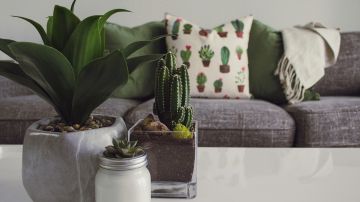Hello darlings!
Do you remember a couple of decades ago when there was a serious drought? We learnt to save water and deal with the consequences of the drought. I remember not being able to stay under the shower for more than 5 minutes, my mom complained about not being able to water her plants and my dad about washing his car.
Thankfully these years have passed. However, there is still a chance of needing to be conservative about water. Here are some suggestions for storing and using water.
Ways to Store Water
There are a multitude of ways to store greywater, rainwater, and water from other sources to re-use or use, be it with or without filtering and treatment. If the water does nee to be purified or filtered, it is better to get in touch with the right water management companies that know what they are doing.
A few ways to store water include:
· Cisterns – you can use cisterns to store water for later re-use. The cisterns can be placed either below or above ground and are usually designed to store several thousand gallons of water at homes.
· Water tanks – water tanks come in a vast selection of sizes and types, including replacement tanks, captive air tanks, plastic or fiberglass tanks, plastic containers, steel water tanks, water pressure tanks, and many others.
Usage Techniques for Stored Water
With so many ways to re-use greywater, here are some of our favourites:
· Septic systems – some storage designs produce wastewater that is adequately sanitary to use for lawn irrigation.
· Filters for greywater can be installed in your washing machine, laundry sink, or your waste water tank outlet so that water can be filtered for re-use.
· Drip irrigation systems use greywater to water your crops, plants, or lawn. The greywater systems conserve water or even relieve septic system water.
Long-Term Storage Solutions for Water
If you’re planning on building an emergency water supply, it’s a good idea to use food-grade varieties of plastic bottles. Glass bottles can be used, provided they have never held any non-food goods. Stainless steel is also an option for storing water, but stainless steel won’t allow you to treat your saved water with chemicals like chlorine as it will very likely corrode. The most important thing is to make sure that you can tightly close the containers you store your water in. You do not want any sort of contamination dirtying your drinking water.
A few long-term options include:
· Empty soda bottles – you can refill these bottles with tap water to store for drinking.
· Water jugs – larger water jugs are usually made from food-grade, sturdy plastic which restricts light and prevents the growth of algae.
· Water barrels – if you have space to store water barrels, these are a great option for a about a month’s worth of water storage. Water barrels are typically made from sturdy, food-grade types of plastics and consist of bungs at the top that can be sealed to protect stored water from contamination. This is a great solution for storing clean water for purposes of drinking, washing, and rinsing food in.
In today’s times of drought and uncertain climates, water storage is essential for hygiene, crops, and many other uses. With the right storage techniques, you can keep clean water or greywater for re-use with very little effort or hassle.
Lots of love
















